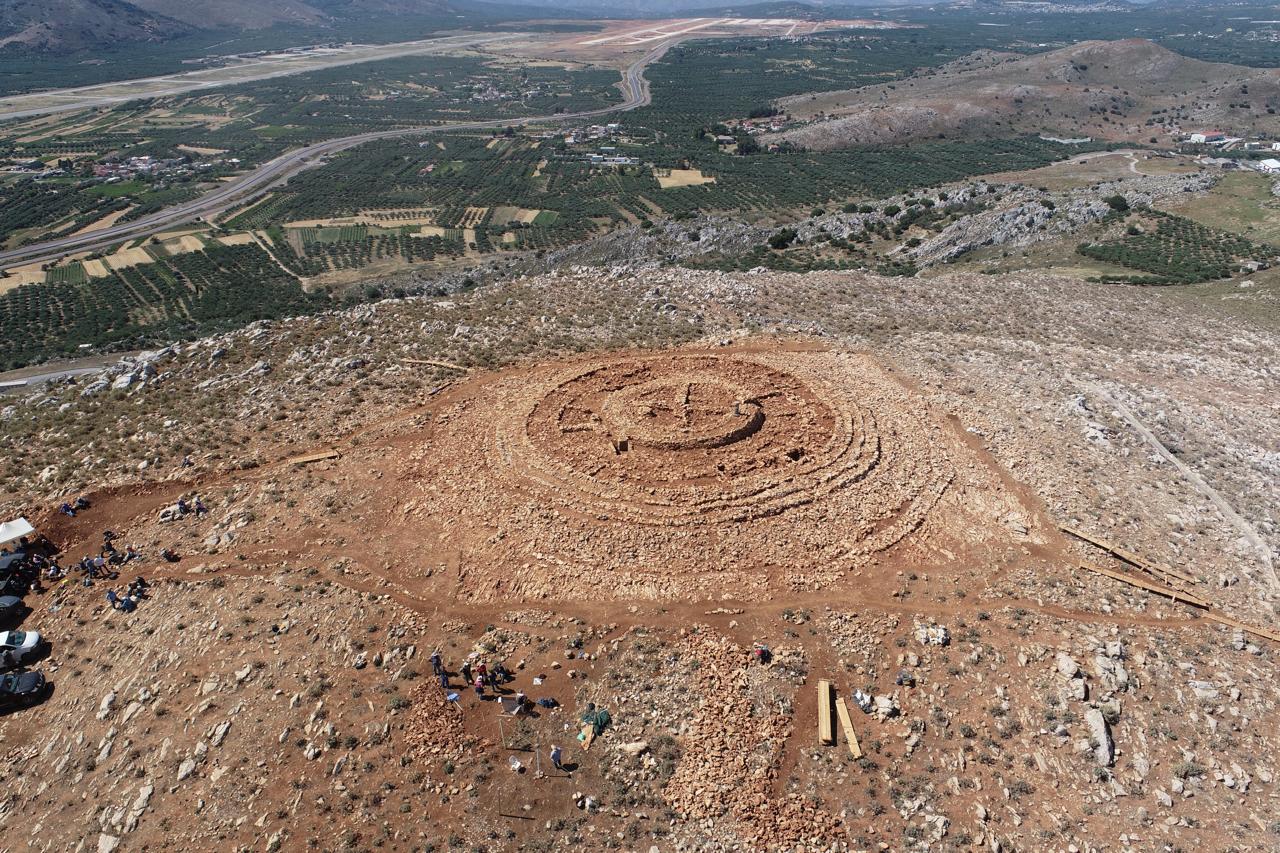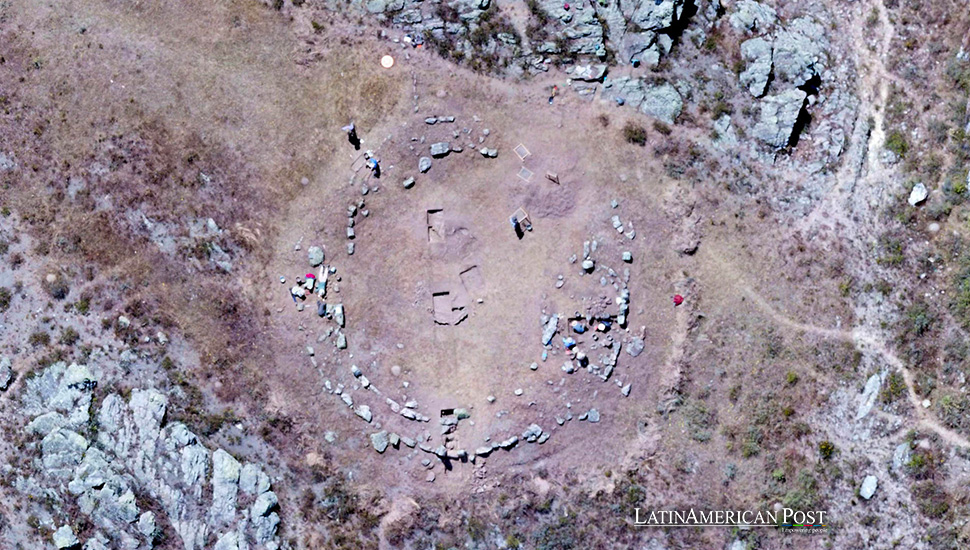Archaeologists have discovered a mysterious stone circle in the Andes Mountains that they say was constructed before the great pyramids of Egypt.

The circular stone plaza, which measures around 60 feet in diameter, consists of two concentric walls made from unshaped stones set vertically in the ground, according to a study reporting the find in the journal Science Advances.
The monument is located in northern Peru’s Cajamarca Valley at the Callacpuma archaeological site, which lies around 10,000 feet above sea level near the summit of a peak in the Andes. Stretching for more than 5,000 miles along the western edge of South America, the Andes range is the longest in the world.

Using radiocarbon dating techniques, researchers determined that initial construction of the circular plaza took place around 4,750 years ago, corresponding to the “Late Precaremic” period of Andean archaeology.

The circular plaza in northern Peru’s Cajamarca Basin, near the summit of Callacpuma. Initial construction of the monument appears to have taken place around 4,750 years ago, a study published in the journal “Science Advances”…
“This structure was built approximately 100 years before the great pyramids of Egypt and around the same time as Stonehenge,” Jason Toohey, anthropological archaeologist with the University of Wyoming and lead author of the study, said in a press release.

The circular plaza is an example of monumental megalithic architecture, which refers to prehistoric structures built using large stones. According to the study, the find at Callacpuma represents one of the earliest examples of monumental, megalithic ceremonial architecture in the Americas.
“This plaza is significant because it is a very early example of public, monumental, and megalithic architecture. There are a few slightly earlier examples in the Andes—and many more recent—but this is the earliest and only example like this from the Cajamarca region of northern Peru,” Toohey told Newsweek.

The monument was built using large, free-standing and vertically placed megalithic stones. This construction method has never been reported before in the Andes and is distinct from other monumental plazas in the region, the researchers said.
The people living in the Cajamarca Valley during this period were at a “really interesting” place in terms of economy and social organization, according to Toohey.

“These were relatively small groups of people, who were still relatively mobile, probably still hunting and gathering to some extent. But this is also the time when people were beginning to experiment with food production—horticulture and perhaps some animal husbandry. This is just that time when people were just beginning to settle down and produce their own food,” he said.

Little is known about why exactly the plaza was constructed, but the form and scale of the monument—as well as the lack of domestic artifacts in the vicinity—indicate that it was probably ceremonial in function.
According to Toohey, the plaza probably served as a gathering place and ceremonial location for some of the earliest people living in this part of the Cajamarca Valley.